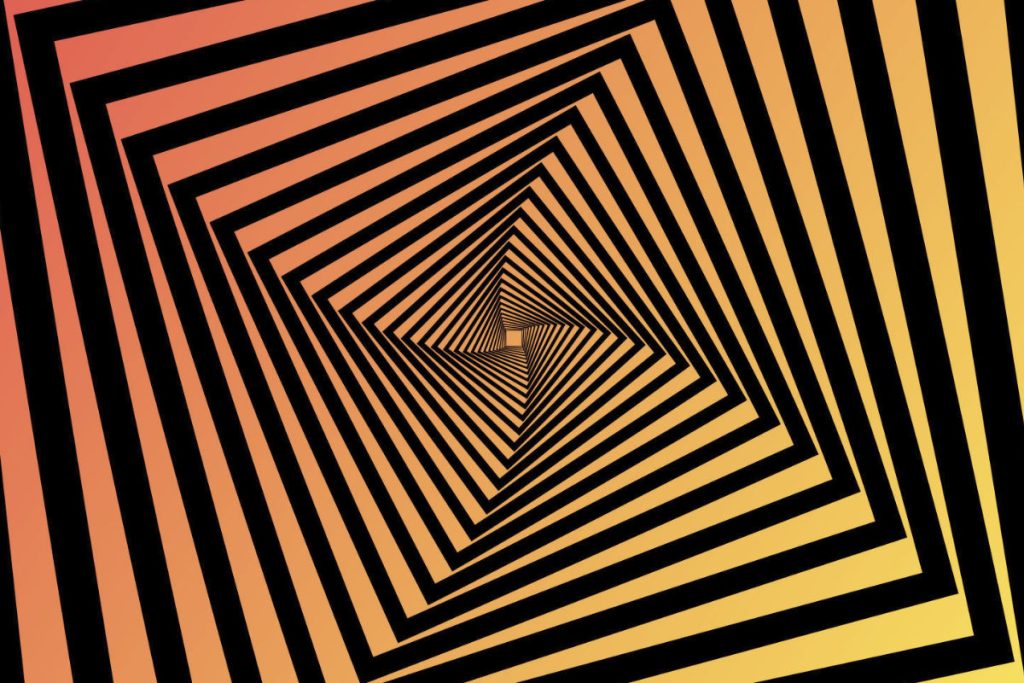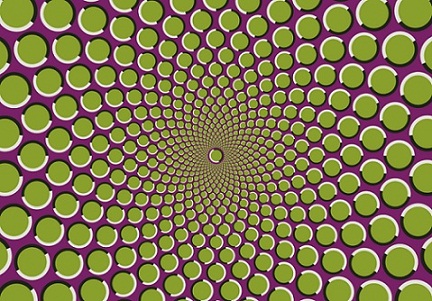
What are optical illusions?
Optical illusions (or visual illusions) are tricks that your mind plays on you based on what you think you are seeing. The image that is being visually perceived is deceptive and does not tally with actual reality. So what you are seeing and what comes out after being processed by the brain does not fit or agree with each other.
When an image is focused onto the retina, bio-electrial signals are transmitted via the optic nerve to the visual cortex of the brain for processing. The visual cortex takes this information (visual stimulus) from the retina and matches it with previous images stored in your memory, in order to interpret to interpret what you are seeing. This process is reliant on previous experiences as well as other visual clues.
However, sometimes the combination of various visual stimuli can confuse the visual cortex. This causes the brain to interpret the images wrongly, and hence, what you see is not the same as what it is in actual reality. This is how optical illusions come about.
There are many different types of optical illusions. Some are common illusions that occur naturally, some are specifically designed by psychologists to test the visual processing system, while others are created as works of art.
In general, optical illusions can be classed into 3 main types:
– Literal or physical illusions, such as mirages and rainbows
– Physiological illusions, which occur from prolonged specific stimulation,
such as brightness, tilt and movement
– Cognitive illusions, which arise from subconscious interference
Examples of optical illusions


Motion illusions occur when static and still images appear to be moving when they is not. This is due to the perception effects that occur when there are interacting color contrasts and shape position.

In the Fraser spiral or twisted cord illusion, the black arcs seem to form a spiral. However, in actual fact, the arcs are a series of concentric circles.

In the Zöllner illusion, the black lines are actually straight and parallel to each other, although they are not perceived to be so.

In the Hermann grid illusion, you will perceive circular grey patches at the intersections of the white grid lines. These grey patches are not actually there, and disappear when you look directly at them.

In the Hering illusion, the two horizontal red lines appear to be bowed outwards. In reality they are both straight and parallel to each other. The altered perception is due to the background lined pattern, which gives a false impression of depth.

In the Ebbinghaus illusion, both the central circles are identical and of equal size. However, the central circle that is surrounded by larger circles appears smaller than the one surrounded by smaller circles.

In the Ponzo illusion, the two horizontal yellow lines are actually of the same length. However, the presence of the black railroad lines create a sensation of perspective which alters perception of the lengths of the yellow lines.

Impossible objects are two-dimensional pictures that are interpreted as being three-dimensional. Both the Necker cube and the Penrose triangle are perceived as objects that cannot be possible physically.

In the Kanizsa triangle, a white triangle is perceived although there is no triangle drawn. This illusion plays on the ability of your mind to ‘fill in gaps’ based on your previous experiences.

To appreciate the PacMan illusion (or lilac chaser), stare at the cross in the middle of the twelve lilac discs for 20 seconds. You will notice that there is a missing lilac disc, and the the other discs will move in a counterclockwise manner to fill up the gap.


